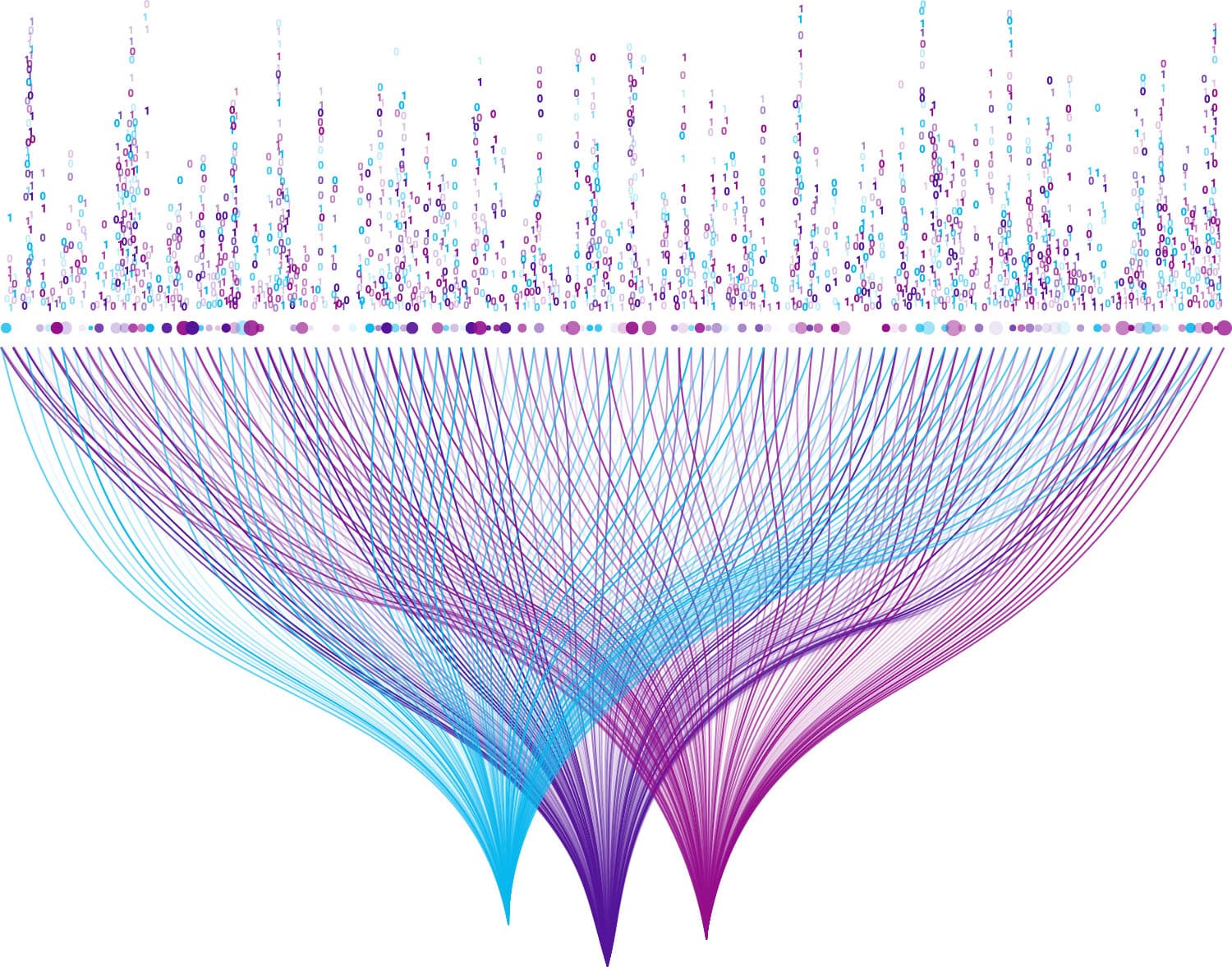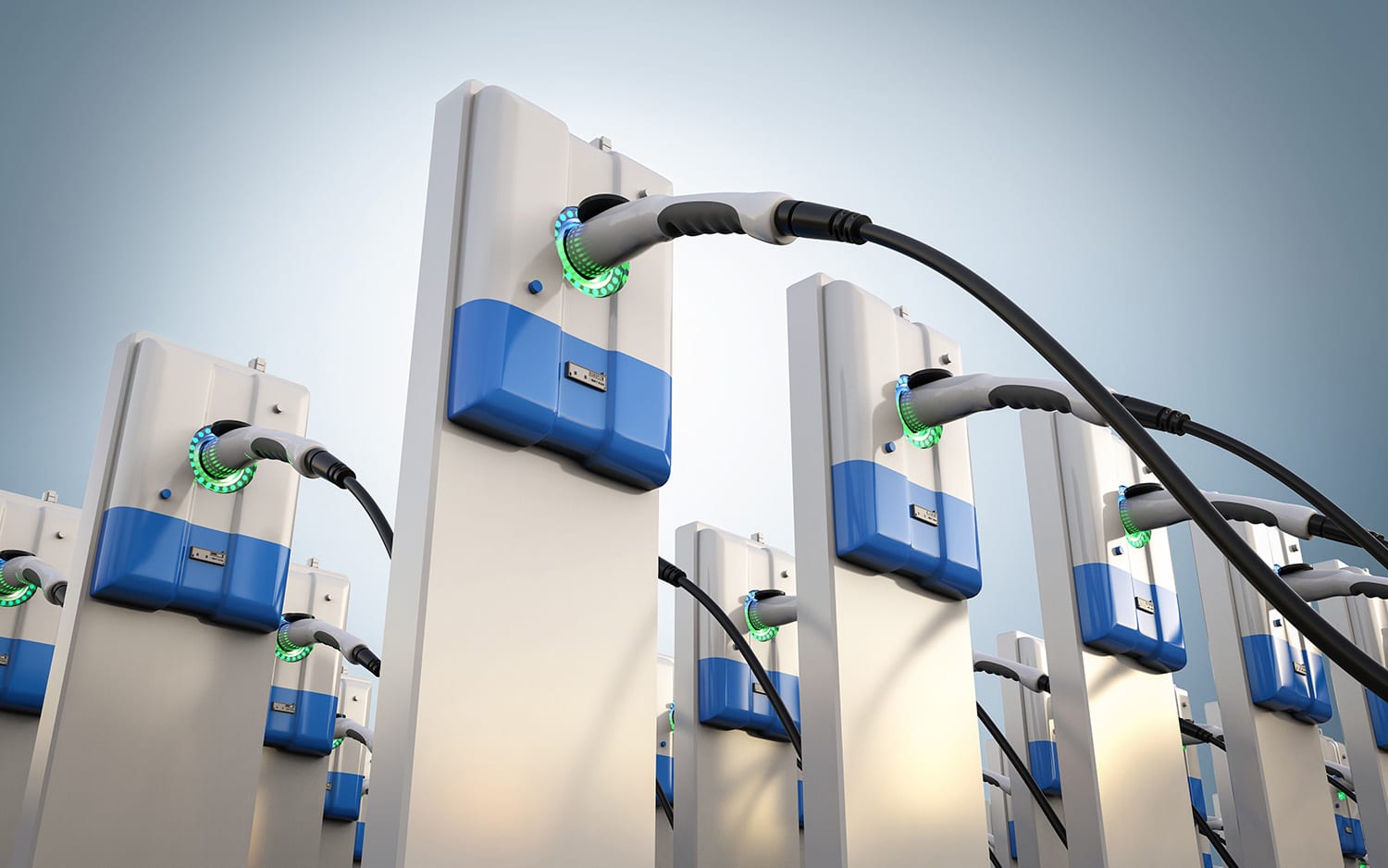
Seven-Generation Decision-Making
A major factor of sustainability is thinking about how we
Share:
Share:
stock.adobe.com / Sensvector, sarymsakov.com
Big data is a term that has become ubiquitous between parking and transportation professionals since the prevalence of the coronavirus pandemic. As a parking professional, I can attest that the parking industry was not immune to the challenges presented by the global pandemic, which are still exhibited today: the shuttering of operations, increased employee turnover, and reduced operational revenues globally. In the wake of the pandemic, parking and transportation professionals were forced to turn to new and innovative technologies to emerge from the health crisis and reopen parking operations in a leaner and more efficient manner that mitigated the impact of the virus. This change in the business environment accelerated technology adoption by several years, leading to the rise of Big Data in parking.
Big Data is a term that can be very perplexing to those outside the tech community but has many meanings in the operational environment. The University of Wisconsin attempts to generalize this term as “the exponential increase and availability of data in our world.” However, Tech Target defines Big Data as “a combination of structured, semi-structured, and unstructured data collected by organizations that can be mined for information and used in machine learning projects, predictive modeling, and other advanced analytics applications.” The coronavirus pandemic illuminated the importance of understanding Big Data as parking and transportation professionals increasingly relied on information to make data-driven operational decisions. As the industry recovered from the pandemic, the question arose about how parking professionals operationalize this data in real-time. This became a topic of interest at conferences over the past three years, where professionals held shop talks, webinars, and learning labs to produce the best data management practices.
This question has many unknowns, but this article will provide insight into the future of the parking industry and shed light on emerging data management trends. Since the pandemic, Big Data has been used to manage parking operations, from hiring to curb management. Plenty of data aggregators have entered the parking space closing the digital divide and bringing a sense of equality in access to Big Data. The change in data use by parking operations, fueled by the COVID-19 pandemic, has led to the inevitable digital transformation of the traditional parking operation. However, the ambiguity of the term “digital transformation” has led to its misapplication regarding the future of the parking industry. The Harvard Business Review defines “digital transformation” as using digital technologies to create new or improved business processes, products, or services. With this definition in mind, technologies such as license plate reader (LPR) systems, digital payment platforms, parking sensors, artificial intelligence camera systems (SaaS), and other technologies are used to streamline traditional parking operations.
The integration of these technologies is the catalyst for the transition of the parking industry from the traditional brick-and-mortar model to the digital era. For example, pre-COVID many parking operations still used physical cashiers, ticket booths, and manual car count systems, leaving room for human error. Although a small demographic of progressive parking agencies had begun to ascend into the digital era, the majority remained in this past time under the guise of providing clients with low overhead operational costs instead of pursuing innovation and technological advancement. This notion was not only premised on a cost analysis but also from the human capital perspective. Pre-COVID salaries had reminded stagnant for decades, and little was required from field operators in parking agencies; it was considered a “good-ole” blue-collar position that only required explicit knowledge and valued years of specific expertise. Fast forward to post-COVID-19, the challenges presented by the pandemic have forced parking operators to adopt new technology and embrace the importance of Big Data in decision-making. This change in business operations has spurred the question of how parking and transportation professionals can effectively manage and operationalize data sets in the new digital era created by the coronavirus pandemic.
Data management is not a term that is taken lightly by any organization inside or outside our beloved parking industry. This has been a topic of conversation for many professionals over the past decade, but only recently has it become a point of concern in the parking industry because of hiring shortages, consumer choice changes, and increased demand. These challenges have changed how firms do business, creating a higher reliance on Big Data. Data is now becoming a lifeline for making operational decisions, driving sales, and improving the customer experience. This has illuminated the importance of shifting the organizational culture from a traditional “hands-on approach” to one that supports the digitalization of processes and decision-making. There are numerous approaches to facilitate this change that firms have practiced in the public and private sectors. However, a commonality in all the approaches is that they are premised on what some call the “four major pillars of data management.” Orion Innovation lists these pillars as Strategy and Governance, Data Standards, Integration, and Quality.

Over the past three years, Big Data has become increasingly prevalent in the parking industry. Smart parking technologies are a growing market designed to automate monotonous tasks using applications such as payment management, valet parking management, occupancy sensor technology, camera-based sensor technology, and LPR systems. Furthermore, this technology enhances security, allowing operators to blacklist and whitelist certain vehicles, capture license plate information, and monitor vehicular traffic without needing a physical presence onsite. This has led to substantial growth in three main core areas of smart parking technology across different segments of the parking industry that provide practitioners access to large amounts of data.
The future direction of the parking industry is ambiguous at best. Since the pandemic, parking and transportation professionals have been continuously tasked with developing best practices and piloting new technologies to solve industry problems. This has led to an influx of new technologies being deployed quickly to mitigate the changes in the industry. This has sparked a paradigm shift in the future of the parking industry, leading to in-depth discussions on the changes in the required human capital skillset for front-line employees, strategic application of technology in field operations, and the importance of creating a culture that cultivates data-driven decision-making.
The following section aims to close the gap by presenting a robust set of recommendations to address each point:
In Conclusion, the expansion in technology use and data availability have shed light on the value of data in the operational environment. The sheer size and magnitude of data available should be considered in discussions on the implications of data and technology on the future of the parking industry. As parking and transportation professionals, we must remember how our company manages data, our current human capital capacity, how and when we apply technology, impact the digital transition of our company, and how our employees embrace big data.
George J. Mclean, DBA, CAPP, is Senior Business Analyst for the Miami Parking Authority and a member of IPMI’s Education Development Committee and Accredited Parking Organization Work Group.

A major factor of sustainability is thinking about how we

EV Readiness Perspectives

Aside from electric and automated vehicle use, what “green” practices
Parking & Mobility is IPMI’s flagship publication, covering the news, trends, analysis, technologies, and people of the parking and mobility industry, and how it affects and influences communities around the world.
| Cookie | Duration | Description |
|---|---|---|
| cookielawinfo-checkbox-advertisement | 1 year | Set by the GDPR Cookie Consent plugin, this cookie is used to record the user consent for the cookies in the "Advertisement" category . |
| cookielawinfo-checkbox-analytics | 11 months | This cookie is set by GDPR Cookie Consent plugin. The cookie is used to store the user consent for the cookies in the category "Analytics". |
| cookielawinfo-checkbox-functional | 11 months | The cookie is set by GDPR cookie consent to record the user consent for the cookies in the category "Functional". |
| cookielawinfo-checkbox-necessary | 11 months | This cookie is set by GDPR Cookie Consent plugin. The cookies is used to store the user consent for the cookies in the category "Necessary". |
| cookielawinfo-checkbox-others | 11 months | This cookie is set by GDPR Cookie Consent plugin. The cookie is used to store the user consent for the cookies in the category "Other. |
| cookielawinfo-checkbox-performance | 11 months | This cookie is set by GDPR Cookie Consent plugin. The cookie is used to store the user consent for the cookies in the category "Performance". |
| CookieLawInfoConsent | 1 year | Records the default button state of the corresponding category & the status of CCPA. It works only in coordination with the primary cookie. |
| elementor | never | This cookie is used by the website's WordPress theme. It allows the website owner to implement or change the website's content in real-time. |
| viewed_cookie_policy | 11 months | The cookie is set by the GDPR Cookie Consent plugin and is used to store whether or not user has consented to the use of cookies. It does not store any personal data. |
| Cookie | Duration | Description |
|---|---|---|
| _ga | 2 years | The _ga cookie, installed by Google Analytics, calculates visitor, session and campaign data and also keeps track of site usage for the site's analytics report. The cookie stores information anonymously and assigns a randomly generated number to recognize unique visitors. |
| _ga_02PMHW8YWC | 2 years | This cookie is installed by Google Analytics. |
| _ga_LC0QJJHM3J | 2 years | This cookie is installed by Google Analytics. |
| _ga_V9KYTSBYT2 | 2 years | This cookie is installed by Google Analytics. |
| iutk | 5 months 27 days | This cookie is used by Issuu analytic system to gather information regarding visitor activity on Issuu products. |
| Cookie | Duration | Description |
|---|---|---|
| mc | 1 year 1 month | Quantserve sets the mc cookie to anonymously track user behaviour on the website. |
| Cookie | Duration | Description |
|---|---|---|
| ultp_view_1052 | 1 day | No description |
| ultp_view_1058 | 1 day | No description |
| ultp_view_1060 | 1 day | No description |
| ultp_view_1064 | 1 day | No description |
| ultp_view_1068 | 1 day | No description |
| ultp_view_1070 | 1 day | No description |
| ultp_view_1072 | 1 day | No description |
| ultp_view_1078 | 1 day | No description |
| ultp_view_1082 | 1 day | No description |
| ultp_view_1088 | 1 day | No description |
| ultp_view_1100 | 1 day | No description |
| ultp_view_1103 | 1 day | No description |
| ultp_view_1114 | 1 day | No description |
| ultp_view_1118 | 1 day | No description |
| ultp_view_1122 | 1 day | No description |
| ultp_view_1125 | 1 day | No description |
| ultp_view_1130 | 1 day | No description |
| ultp_view_1132 | 1 day | No description |
| ultp_view_1135 | 1 day | No description |
| ultp_view_1541 | 1 day | No description |
| ultp_view_1554 | 1 day | No description |
| ultp_view_1557 | 1 day | No description |
| ultp_view_1560 | 1 day | No description |
| ultp_view_1563 | 1 day | No description |
| ultp_view_1568 | 1 day | No description |
| ultp_view_1572 | 1 day | No description |
| ultp_view_1576 | 1 day | No description |
| ultp_view_1580 | 1 day | No description |
| ultp_view_2305 | 1 day | No description |
| ultp_view_2321 | 1 day | No description |
| ultp_view_2338 | 1 day | No description |
| ultp_view_2342 | 1 day | No description |
| ultp_view_259 | 1 day | No description |
| ultp_view_270 | 1 day | No description |
| ultp_view_275 | 1 day | No description |
| ultp_view_286 | 1 day | No description |
| ultp_view_3074 | 1 day | No description |
| ultp_view_3115 | 1 day | No description |
| ultp_view_3334 | 1 day | No description |
| ultp_view_3336 | 1 day | No description |
| ultp_view_3338 | 1 day | No description |
| ultp_view_3340 | 1 day | No description |
| ultp_view_3346 | 1 day | No description |
| ultp_view_3354 | 1 day | No description |
| ultp_view_3361 | 1 day | No description |
| ultp_view_3367 | 1 day | No description |
| ultp_view_365 | 1 day | No description |
| ultp_view_367 | 1 day | No description |
| ultp_view_38 | 1 day | No description |
| ultp_view_3846 | 1 day | No description |